UPDATE: This was originally published April 22, 2015
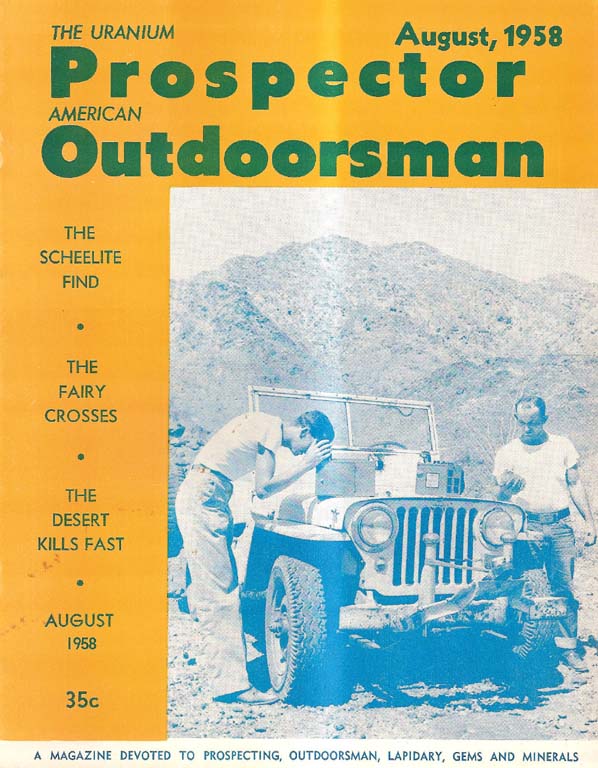
Credit for posting this rare magazine cover with a CJ-2A on it goes to: http://national-radiation-instrument-catalog.com/new_page_14.htm
The hunt for Uranium during the late 1940s and into the 1950s in the American West was a big deal. It’s also the last great mineral rush with-in the continental United States. Uranium’s grand paradox, as author Tom Zoellner puts it, is that “[t]he stability of our world rests on a substance that is unstable at the core.”
So large was the hunt for Uranium, the May 23, 1955, issue of Life Magazine noted that more man-hours had been spent hunting for Uranium between 1952 and 1955 than were spent seeking all other metals in history, at least according to the Atomic Energy Commission. Having spent considerable time thumbing through decades of mine related information prior to the 1900s, I find this claim dubious, but maybe someone can explain how this could be?
Still, the uranium boom captivated the imagination of the public. Uranium Fever was written and sung by Eliot Britt in 1955 and included jeep references. This great site shows how the search affected popular magazines of the time. In the Life Magazine article referenced above (pg 26), the author included a list of ultimate gear for prospecting. At the very top of the list was a brand-new four-wheel jeep for only $1,685, along with equipment and a map of the best places to hunt:
One of those people inspired to look for uranium became one of the most successful uranium hunters in the United States. His name was Charlie Steen and his discovery of the Mi Vida mine in 1951 bar Monticello, Utah, made him a wealthy man. His son, Mark Steen, has written a history of his father and the mine that includes an essay about Charlie correct a variety of inaccuracies.
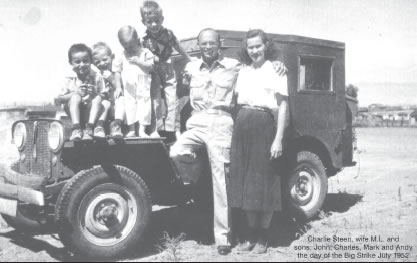 Wikipedia published this photo that also includes the jeep:
Wikipedia published this photo that also includes the jeep:
After Charlie Steen hit it big with the Mi Vida mine, he built a large house on a hill in Moab. Today, that restaurant is called the Sunset Grille. (NOTE: Ann and her mom ate their four years ago and were disappointed – maybe it has improved?). In 1992 Charlie was reunited with his jeep as part of his role as Guest of Honor in Moab’s Fourth of July parade. At some juncture, the jeep was moved to its current (anyone know if it is still there) location on the rocks above the Sunset Grille. Recently, a well done photo below was taken of the jeep; its accompanying post is in German, but the pictures on the post are beautiful.
Thanks to Iowa Steve for some of the above links that inspired me to cobble the information together.
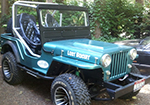
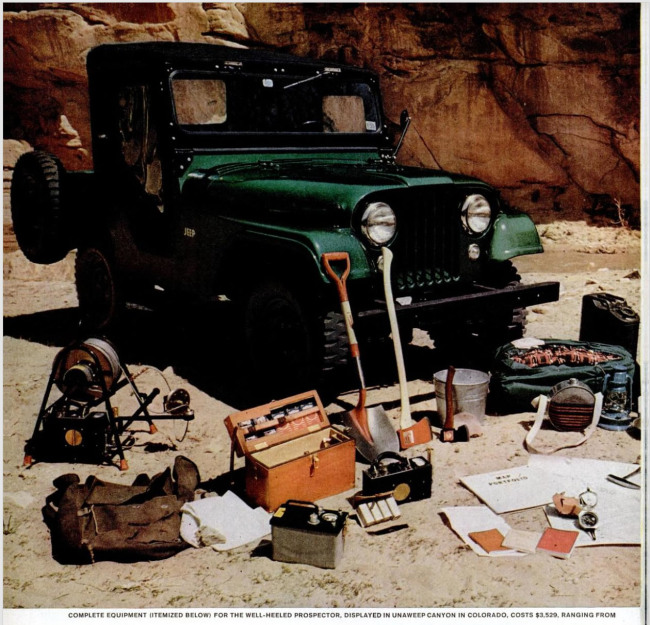
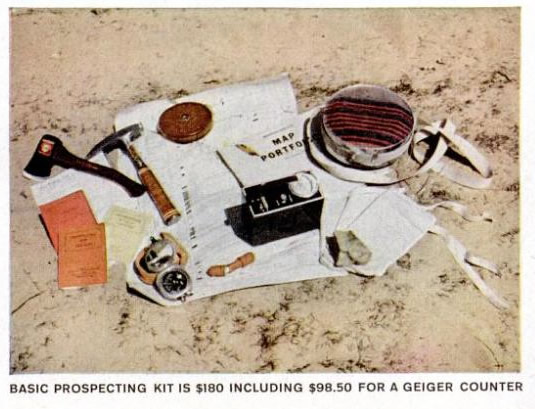
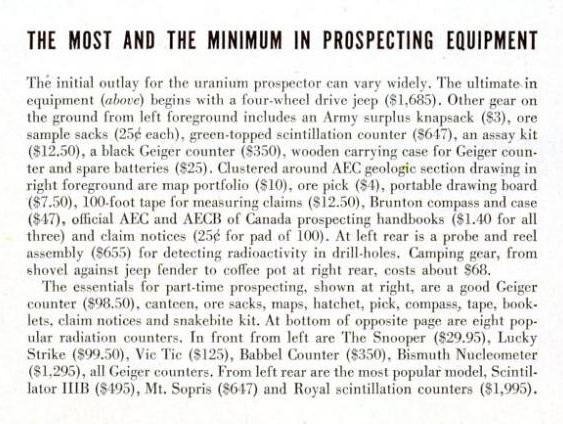
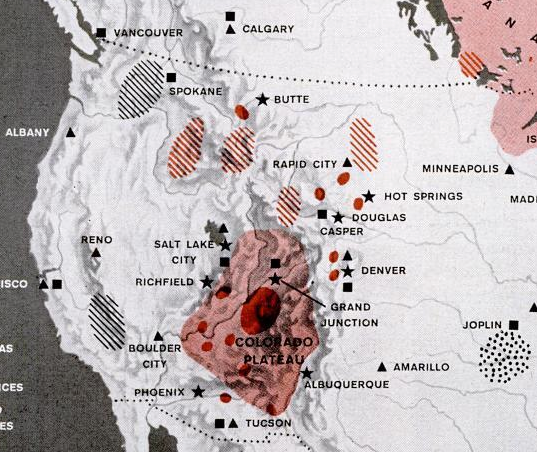


Now that jeep looks totally correct. It’s so shiny. (The green one. Red one, not so shiny.) Cool photos…look at the top on that baby, wow.
No jeeps here but something to entertain during the recovery:
Lucy Hunts Uranium
https://www.youtube.com/watch?v=SVZ-NS47fzo
It was there at EJS 2 years ago still at the Daystar dinner at the Sunset Grill. Didn’t get up there this year to check things out.
Hi Dave-
On the magazine cover it mentions the great Sheelite find. Is there an article about that inside the book or do you only have the cover? There was an old abandoned Sheelite mine located in the next canyon to us in the Huachucas in Cochise County AZ, and was wondering if it might have been mentioned. The “trail” going up to it was simply that, but a Jeep could traverse it. It say way high on a ridge and if you didn’t know it was there, you could easily miss it.
Hi Colin,
I got the image from this page: http://national-radiation-instrument-catalog.com/new_page_14.htm
I just checked to see if eBay had a copy for sale, but no luck!
– Dave